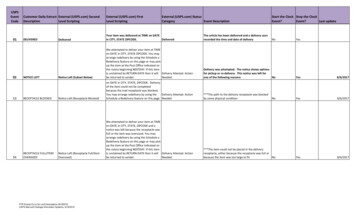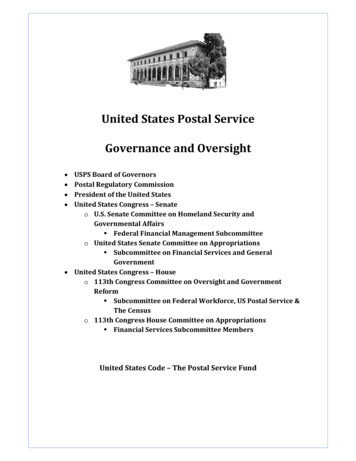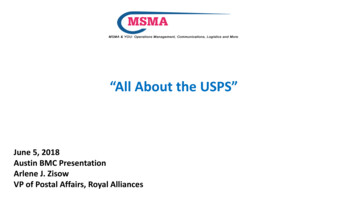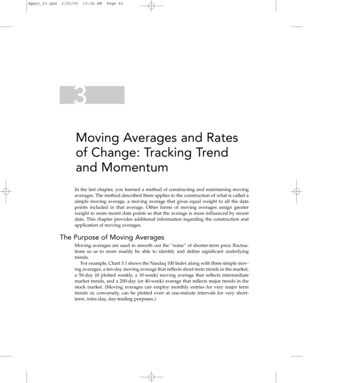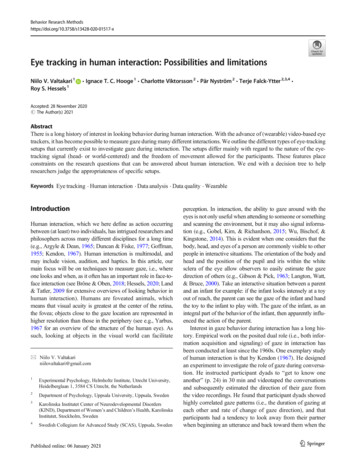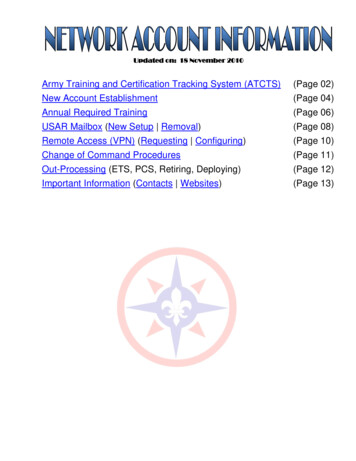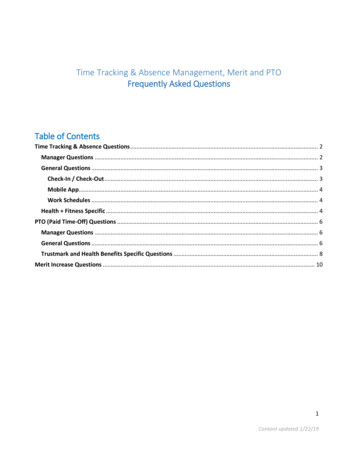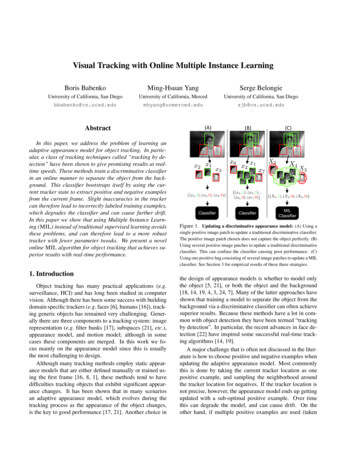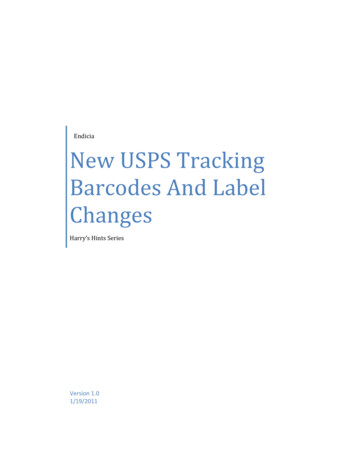
Transcription
EndiciaNew USPS TrackingBarcodes And LabelChangesHarry’s Hints SeriesVersion 1.01/19/2011
Copyright 2004-2011 Endicia, A Newell Rubbermaid CompanyAll rights reserved.This document is the property of Endicia, A Newell Rubbermaid Company and may not be reproduced,published, transmitted to other parties, in whole of in part, without written permission.DAZzle and Endicia are registered trademarks of PSI Systems Inc. All other trademarks are property oftheir respective owners.DYMO and all DYMO trademarks (such as DYMO Stamps ) are trademarks of Sanford, L.P. CopyrightSanford, L.P.Endicia, A Newell Rubbermaid Company385 ShermanPalo Alto CA 94306New USPS Tracking Barcodes And Label Changes2
ContentsIntroduction . 4The New IMpb Barcode Structure . 4Goodbye "USPS Delivery Confirmation"—Hello "USPS Tracking #" . 5Hey, What's that Weird Number on My Label! . 5New USPS Tracking Barcodes And Label Changes3
IntroductionWith the January 2, 2011 release of our Endicia software, we began using a new USPS barcode protocolcalled Intelligent Mail Parcel Barcode or IMpb, for short. If you have been using Delivery Confirmation inthe past, the new barcodes look pretty much like the old ones, but the data inside have changed. Fordomestic Express Mail users, you will notice that the new tracking number looks identical to the DeliveryConfirmation barcode. Gone is the old alphanumeric "EO123456789US" Express format—so that is avery noticeable change. In contrast, tracking numbers on USPS international packages have notchanged.The New IMpb Barcode StructureLet's look at the new barcode structure. The first two digits are always a 94, which means that this labelwas created by a PC postage vendor. Next is a very important 3-digit "service code". Prior barcodes hada 2-digit service code—the new IMpb adds one more digit. The USPS has a published list of service codesin Appendix I of the USPS Publication 91 Addendum. The 055 in the example below means that this isPriority Mail with Delivery Confirmation. There are hundreds of possible service codes. They essentiallycover all possible permutations of USPS services. For instance, there is a different service code for aPriority Mail package with Delivery Confirmation and insurance. There is another service code for FirstClass Mail with Delivery Confirmation and Restricted Delivery. So, the new 3-digit Service Type Code(STC) encapsulates the mail class and any and all extra services.The next two digits are a source identifier. The number 10 uniquely identifies Endicia Internet Postage.Next is a Mailer ID (MID). MID's are assigned by the USPS to identify the originator of the barcode.Because our loyal Endicia customers create millions of barcodes per day, we were given several special6-digit MID’s (the one shown is the example barcode is 200793). When using a 6-digit MID, we employthe 10 for the source identifier and we can generate up to 100 million unique tracking numbers.Some of our customers have been assigned their own MID by the USPS, and we will then generatebarcodes using their MID. These MID’s are usually 9 digits in length. With a 9-digit MID, you cangenerate up to 100,000 unique tracking numbers (and this is the situation where we use the “15” for asource identifier).Our goal with domestic tracking numbers is to maintain uniqueness for at least 6 months. So, you maysee tracking numbers “re-used” but always with a gap of at least 6 months.New USPS Tracking Barcodes And Label Changes4
So there you have it. You can now read and understand the domestic tracking barcodes!Goodbye "USPS Delivery Confirmation"—Hello "USPS Tracking #"In a few weeks, the text banners above the barcode on your labels will magically change. For instance,where the "ZIP-USPS Delivery Confirmation" text appears, you will see "USPS Tracking #". Even "ZIP USPS Signature Confirmation" will change to "ZIP - USPS Tracking #". You won't have to update yourcopy of DAZzle or Endicia for Mac—the banner text will simply change one day (spooky, huh?). Therewording reflects the USPS's continuing commitment to provide better package visibility during thedelivery cycle. When Delivery Confirmation started around 2000, you got just that—a single scanindicating the delivery event. Now, you will typically see 5 to 7 events for a given package. So thatexplains the change in wording. If you are using Stealth Postage, it will be difficult to tell a SignatureConfirmation label from a Delivery Confirmation label, so be aware of that. However, the deliveringcarrier will always know what to do when he or she scans the barcode: the scanner gun will tell him orher exactly what actions are needed.Hey, What's that Weird Number on My Label!Another thing that popped up on shipping labels starting with our January 2, 2011 release was a 4-digitnumber called the Retail Distribution Code (RDC). Do you see the "0006" on the image below? That's theRDC.New USPS Tracking Barcodes And Label Changes5
The RDC is used by your local Post Office to do a preliminary package sort. Your local Post Officeprepares containers every evening that are filled with packages heading to the nearest USPS processing"plant". For instance, our local Palo Alto, California Post Office forwards mail to the San FranciscoSectional Center Facility (SCF) every evening. The RDC code lets the Palo Alto dock workers perform afirst-level sort so that packages destined for the San Francisco Bay Area would go into one container andthose packages going to the East Coast would be in another container. Previously, they sorted by lookingat the ZIP Code of the address and then figuring out what container would be appropriate. Now, theycan just sort based on the simple RDC code and save a ton of time. This preliminary sort at the inductingPost Office speeds up the processing at the main plant.New USPS Tracking Barcodes And Label Changes6
Jan 19, 2011 · The New IMpb Barcode Structure Let's look at the new barcode structure. The first two digits are always a 94, which means that this label was created by a PC postage vendor. Next is a very important 3-digit "service code". Prior barcodes had a 2-digit service code—the new IMpb adds one m
